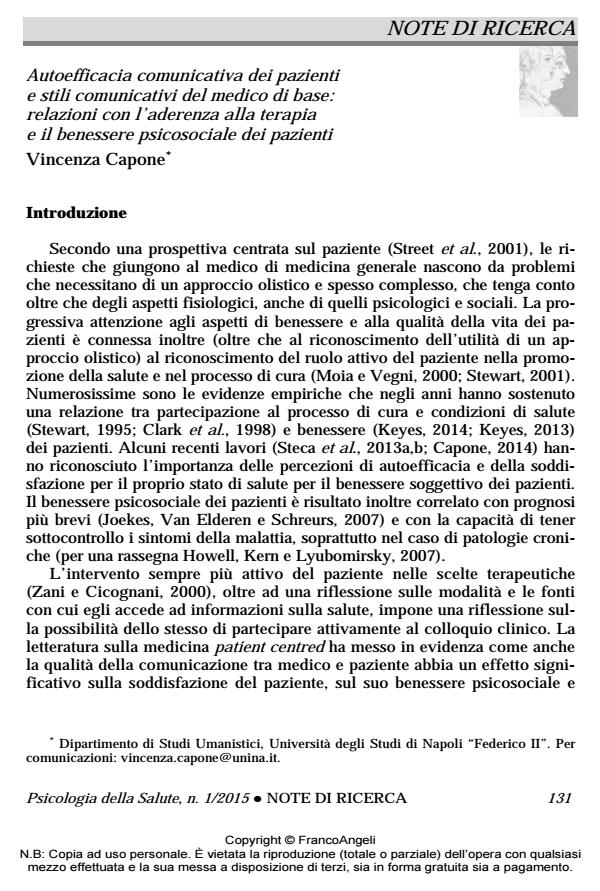Patient communication self-efficacy and communication styles of the primary care physician: relations with patients’ adherence and psychosocial well-being
Journal title PSICOLOGIA DELLA SALUTE
Author/s Vincenza Capone
Publishing Year 2015 Issue 2015/1
Language Italian Pages 18 P. 131-148 File size 113 KB
DOI 10.3280/PDS2015-001011
DOI is like a bar code for intellectual property: to have more infomation
click here
Below, you can see the article first page
If you want to buy this article in PDF format, you can do it, following the instructions to buy download credits

FrancoAngeli is member of Publishers International Linking Association, Inc (PILA), a not-for-profit association which run the CrossRef service enabling links to and from online scholarly content.
In a patient-centered medicine approach, adherence to therapy is determined by several psychosocial factors that affect both the physician and the patient: a good relationship, effective communication, feeling respected by their physician are some of them, especially in primary care. The aim of this longitudinal study was to investigate the relationship between patient communication self-efficacy, physician communication styles, as well as perceived by the patient, mental health (emotional, psychological, and social well-being), mental ill ness and adherence to care. A further aim was to identify gender and educational level differences for the variables considered. Based on a sample of 60 patients aged between 18 and 80, and equally distributed by gender, a Path Analysis was calculated. The results showed a central role for the communicative efficacy of patient adherence and psychological well-being. With regard to the communication style of the doctor, as perceived by the patient, problem solving and respect, and hostility (negatively) affected adherence to therapy. The latter is found to be a protective factor from mental illness. There are no differences by gender and educational level. The results, in addition to providing empirical evidence on the role of self-efficacy to communicate to the well-being of patients in a setting as complex as health care, provide information useful for training aimed at improving the communication skills of general practitioners and patients.
Keywords: Adherence, primary care, well-being, patient, mental illness, communication selfefficacy, mental health.
- The English Version of the Health Profession Communication Collective Efficacy Scale (HPCCE Scale) by Capone and Petrillo, 2012 Vincenza Capone, Leda Marino, Anna Rosa Donizzetti, in European Journal of Investigation in Health, Psychology and Education /2020 pp.1065
DOI: 10.3390/ejihpe10040075
Vincenza Capone, Autoefficacia comunicativa dei pazienti e stili comunicativi del medico di base: relazioni con l’aderenza alla terapia e il benessere psicosociale dei pazienti in "PSICOLOGIA DELLA SALUTE" 1/2015, pp 131-148, DOI: 10.3280/PDS2015-001011